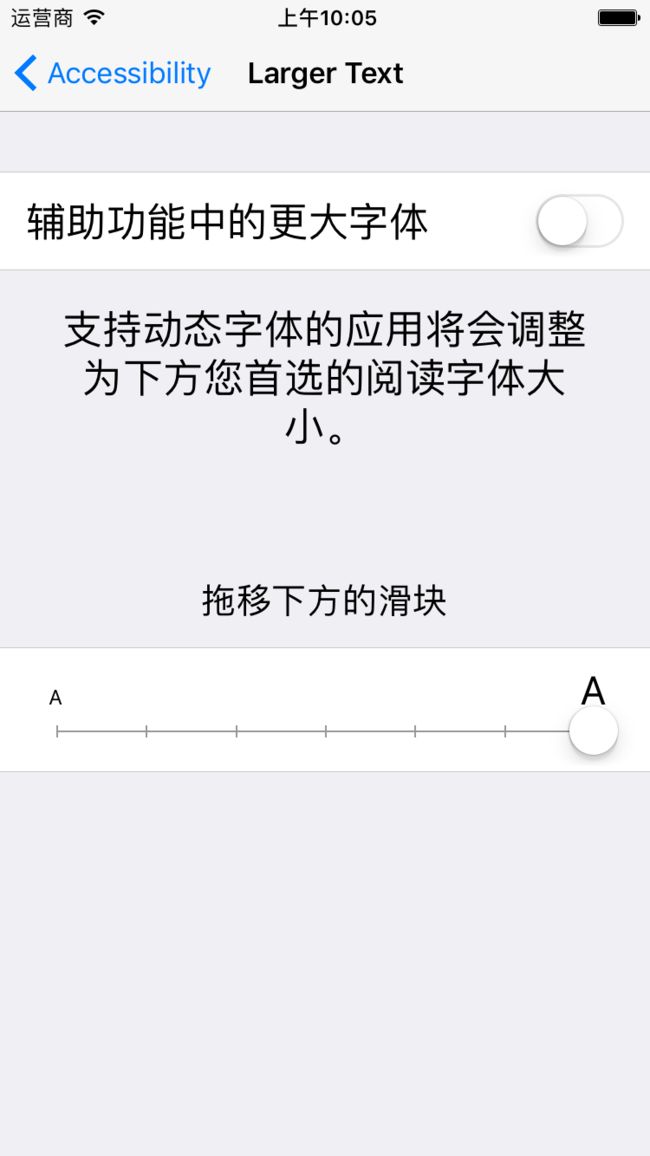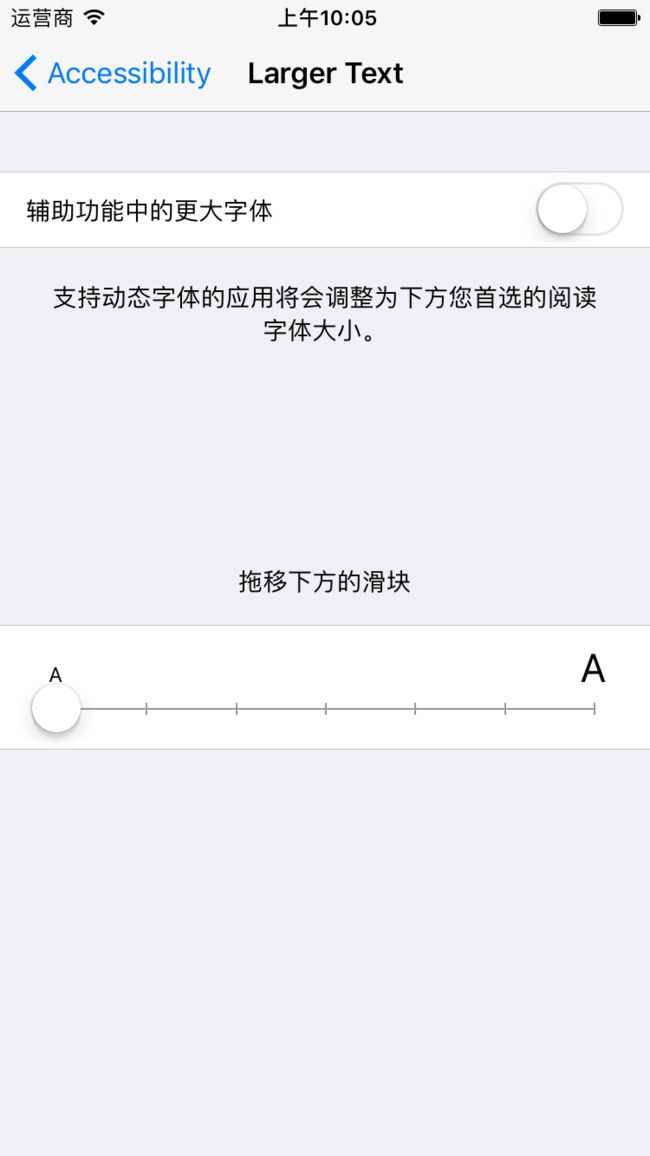iOS tabbar设置
1. 深层定制 tabBar. 通过打印子视图,我们发现 tabBar 的层级结构变化非常大.
在 iOS10中可以对 tabBarItem 里的内容进行定制.比如 badge 的颜色和文字的属性,item 的 TintColor
1.1>改变 tabBar 的unselectedItemTintColor
self.tabBar.tintColor = [UIColor colorWithRed:(128 / 255.0) green:(177 / 255.0) blue:(34 / 255.0) alpha:1];
self.tabBar.unselectedItemTintColor = [UIColor redColor];在10之前我们设置方式
+ (void)initialize {
// 未选中时
NSMutableDictionary *textAttrs = [NSMutableDictionary dictionary];
textAttrs[NSFontAttributeName] = [UIFont systemFontOfSize:12];
textAttrs[NSForegroundColorAttributeName] = [UIColor grayColor];
// 选中时字体颜色和选中图片颜色一致
NSMutableDictionary *selectedTextAttrs = [NSMutableDictionary dictionary];
selectedTextAttrs[NSFontAttributeName] = textAttrs[NSFontAttributeName];
selectedTextAttrs[NSForegroundColorAttributeName] = [UIColor colorWithRed:(128 / 255.0) green:(177 / 255.0) blue:(34 / 255.0) alpha:1];
// 通过appearance统一设置所有UITabBarItem的文字属性样式
UITabBarItem *item = [UITabBarItem appearance];
[item setTitleTextAttributes:textAttrs forState:UIControlStateNormal];
[item setTitleTextAttributes:selectedTextAttrs forState:UIControlStateSelected];
}1.2>设置 badge 的颜色
10之前 badge 的背景默认是红色
self.tabBarItem.badgeColor = [UIColor blueColor];
self.tabBarItem.badgeValue = @"100";
NSDictionary *dict = @{
NSForegroundColorAttributeName : [UIColor redColor],
NSFontAttributeName : [UIFont systemFontOfSize:10]
};
[self.tabBarItem setBadgeTextAttributes:dict forState:UIControlStateNormal];2. 动态字体大小(Dynamic Type)
可以设置字体随系统变化动态调整大小
UILabel *label = [[UILabel alloc] initWithFrame:CGRectMake(10, 20, 300, 40)];
[self.view addSubview:label];
label.text = @"字体随系统字体变化";
// 1. 设置 font 大小
label.font = [UIFont preferredFontForTextStyle:UIFontTextStyleBody];
// 2. 允许调整大小
label.adjustsFontForContentSizeCategory = YES;设置之后 当我们调整系统字体大小, label 的字体也会随着进行调整.
3. 刷新控件(UIRefreshControl)
在 iOS10之后,只要继承UIScrollView,都具有刷新的功能
UIScrollView *scrollView = [[UIScrollView alloc] initWithFrame:CGRectMake(0, 200, 400, 500)];
scrollView.backgroundColor = [UIColor redColor];
scrollView.contentSize = CGSizeMake(500, 1000);
[self.view addSubview:scrollView];
UIImageView *imageView = [[UIImageView alloc] initWithImage:[UIImage imageNamed:@"1"]];
[scrollView addSubview:imageView];
// 添加下拉刷新控件
UIRefreshControl *ref = [[UIRefreshControl alloc] init];
// 监听刷新方法
[ref addTarget:self action:@selector(refresh:) forControlEvents:UIControlEventValueChanged];
scrollView.refreshControl = ref;- (void)refresh:(UIRefreshControl *)ref {
dispatch_after(dispatch_time(DISPATCH_TIME_NOW, (int64_t)(2 * NSEC_PER_SEC)), dispatch_get_main_queue(), ^{
// 结束刷新
[ref endRefreshing];
});
}4. 语音识别
iOS10开放了语音识别的 api,
1.需要导入框架
#import <Speech/Speech.h>2.在 info.plist 进行配置,添加key 值
Privacy - Speech Recognition Usage Description3.创建实例对象
SFSpeechRecognizer *recognizer = [[SFSpeechRecognizer alloc] initWithLocale:[[NSLocale alloc] initWithLocaleIdentifier:@"zh_CN"]];
NSURL *url = [[NSBundle mainBundle] URLForResource:@"录音.MP3" withExtension:nil];
SFSpeechURLRecognitionRequest *request = [[SFSpeechURLRecognitionRequest alloc] initWithURL:url];
[recognizer recognitionTaskWithRequest:request resultHandler:^(SFSpeechRecognitionResult * _Nullable result, NSError * _Nullable error) {
if (error) {
NSLog(@"%@", error.userInfo);
} else {
NSLog(@"%@", result.bestTranscription.formattedString);
}
}];





